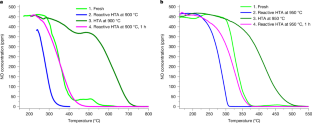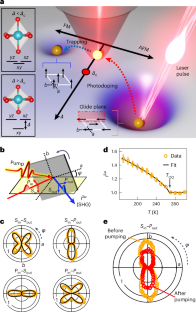2025-04-09 ワシントン州立大学(WSU)
<関連情報>
- https://news.wsu.edu/press-release/2025/04/09/serendipitous-discovery-could-lead-to-more-efficient-catalysts/
- https://www.nature.com/articles/s41586-025-08684-x
セリアの2次元クラスター化が触媒活性を高める Transforming ceria into 2D clusters enhances catalytic activity
Konstantin Khivantsev,Hien Pham,Mark H. Engelhard,Hristiyan A. Aleksandrov,Libor Kovarik,Mark Bowden,Xiaohong Shari Li,Jinshu Tian,Iskra Z. Koleva,Inhak Song,Wenda Hu,Xinyi Wei,Yipeng Sun,Pascaline Tran,Trent R. Graham,Dong Jiang,David P. Dean,Christian J. Breckner,Jeffrey T. Miller,Georgi N. Vayssilov,János Szanyi,Abhaya Datye & Yong Wang
Nature Published:09 April 2025
DOI:https://doi.org/10.1038/s41586-025-08684-x

Abstract
Ceria nanoparticles supported on alumina are widely used in various catalytic reactions, particularly in conjunction with platinum group metals (PGMs)1,2,3,4,5,6,7,8,9. Here we found that treating these catalysts at temperatures between 750 and about 1,000 °C in the presence of CO and NO in steam (reactive treatment under reducing atmosphere) leads to the dispersion of ceria nanoparticles into high-density 2D (roughly one atomic layer thin) CexOy domains, as confirmed by microscopy, X-ray photoelectron spectroscopy (XPS), X-ray absorption spectroscopy (XAS), infrared spectroscopy and density functional theory (DFT) calculations. These domains, which densely cover the alumina, exhibit substantially enhanced oxygen mobility and storage capacity, facilitating easier extraction of oxygen and the formation of Ce3+ sites and oxygen vacancies. As a result, these catalysts—whether with or without PGMs, such as Rh and Pt—show improved activity for several industrially important catalytic reactions, including NO and N2O reduction, as well as CO and NO oxidation, even after exposure to harsh ageing conditions. This study shows a catalyst architecture with superior redox properties under conditions that typically cause sintering, offering a pathway to more efficient metal–ceria catalysts for enhanced general catalysis.



